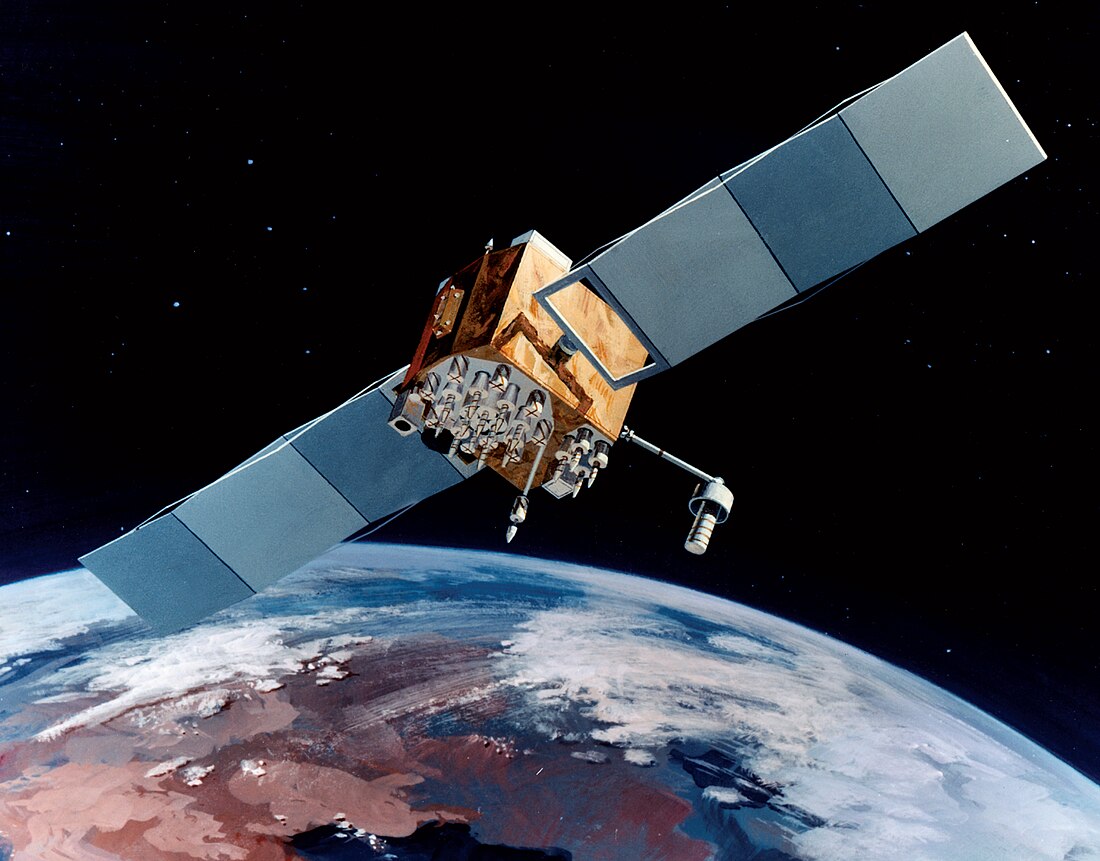Top Qs
Timeline
Chat
Perspective
USA-242
American navigation satellite used for GPS From Wikipedia, the free encyclopedia
Remove ads
USA-242, also known as GPS IIF-4, GPS IIF SV-5, Navstar-68 and Vega,[3] is an American navigation satellite which was launched on 15 May 2013 and became operational on 21 June 2013.[4] The fourth Block IIF GPS satellite, it forms part of the Global Positioning System.
USA-242 is a 1,630-kilogram (3,590 lb) spacecraft, built by Boeing with a design life of 15 years.[1] It operates from a semi-synchronous medium Earth orbit, at an altitude of 20,459 kilometers (12,713 mi) an inclination of 55 degrees,[2] in slot 5 of plane C of the GPS constellation.[5] The new satellite was originally intended to replace the seventeen-year-old USA-117 satellite,[6] but currently both USA-117 (SVN-33) and USA-242 (SVN-66) are in active use.[7] USA-242 broadcasts its navigation signals using the PRN-27 signal modulation.
United Launch Alliance conducted the launch of GPS IIF-4, using an Atlas V 401 carrier rocket. Launch took place from Space Launch Complex 41 at the Cape Canaveral Air Force Station, with liftoff occurring at 21:38 UTC on 15 May 2013, the beginning of an 18-minute launch window. The launch marked the first time since 1985 that a GPS satellite had launched on an Atlas rocket, or indeed any rocket other than a Delta.[6]
Remove ads
References
Wikiwand - on
Seamless Wikipedia browsing. On steroids.
Remove ads

